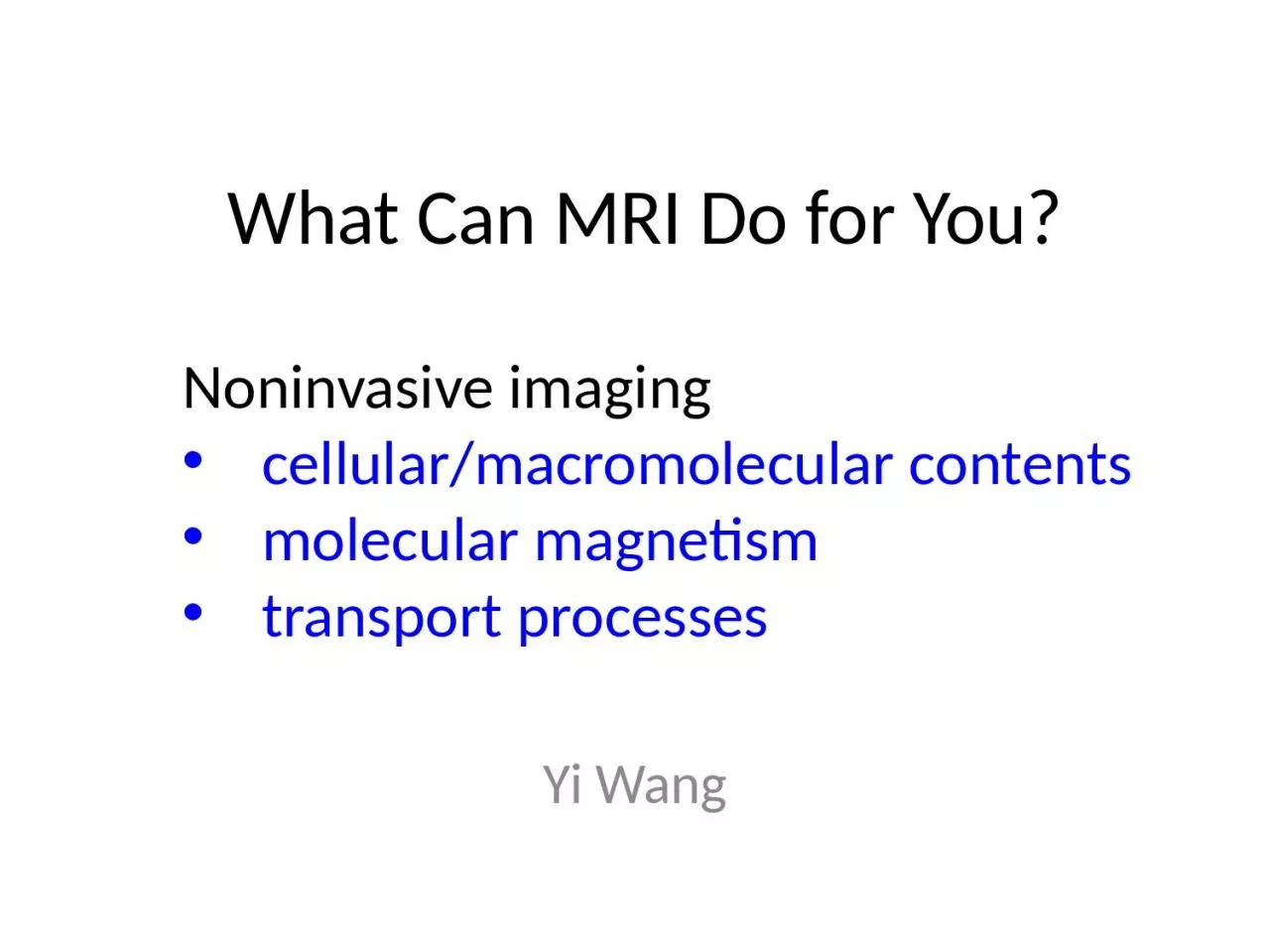

Yi Wang Noninvasive imaging cellular macromolecular contents molecular magnetism transport processes Transport processes This category of MRI contrast mechanisms is useful for assessing live tissue functions ID: 915606
Download Presentation The PPT/PDF document "What Can MRI Do for You?" is the property of its rightful owner. Permission is granted to download and print the materials on this web site for personal, non-commercial use only, and to display it on your personal computer provided you do not modify the materials and that you retain all copyright notices contained in the materials. By downloading content from our website, you accept the terms of this agreement.
Slide1
What Can MRI Do for You?
Yi Wang
Noninvasive
imaging
cellular
/macromolecular
contents
molecular magnetism
transport processes
Slide2Transport processes
This category of MRI contrast mechanisms is useful for assessing live tissue functions:FlowPerfusion, convection, permeability
Diffusion (tensor)
Slide3Diffusion – incoherent motion
Isotropic
Restricted
Diffusion increase in tumor (bright)
Diffusion decrease in acute ischemia (dark)
Fiber
tractography
Slide4Perfusion & flow – coherent motion
Coherent
Ischemic stroke
Flow (vessel blocked in left)
Reduced perfusion (yellow)
Slide5Molecular magnetism
This category of MRI contrast mechanisms is useful to assess molecular properties and their changes in metabolism (oxygen metabolism, iron metabolism):Electron cloud response – chemical shift at molecule nuclei, diamagnetic field outside molecule
Unpaired electrons – strong paramagnetic field outside molecule
Slide6Tissue magnetism
Orbital response (Lorentz force):
Magnetic moment opposing B
Diamagnetic
Chemical shift at nucleus
B
Unpaired e
-
Spin response (torque):
Magnetic moment parallel to B
paramagnetic
An external magnetic field puts force/torque on electrons.
Protons are too heavy to respond.
M
Slide7Chemical shift – NMR spectroscopy
Slide8Iron paramagnetism – fMRI, QSM
Electronic configuration
fMRI
Iron metabolism
Slide9Relaxation (T1, T2)This category of contrast mechanism is useful to examine macromolecular/cellular contents in water.
T2 is very sensitive to cellular content change, a must in all MRI protocols in clinical practice.T1 is sensitive to tissue global or “lattice” environment, used with contrast agents.
Slide10cellular contents: T2 relaxation
Pure water:
Zero contents
1
/T2 small,
T2 long, 2 sec
Normal tissue:
Lots of contents
1
/T2 large,
T2 short, 75
msec
Edema/lesion:
Median amount
1
/T2 median,
T2 median, 200
msec